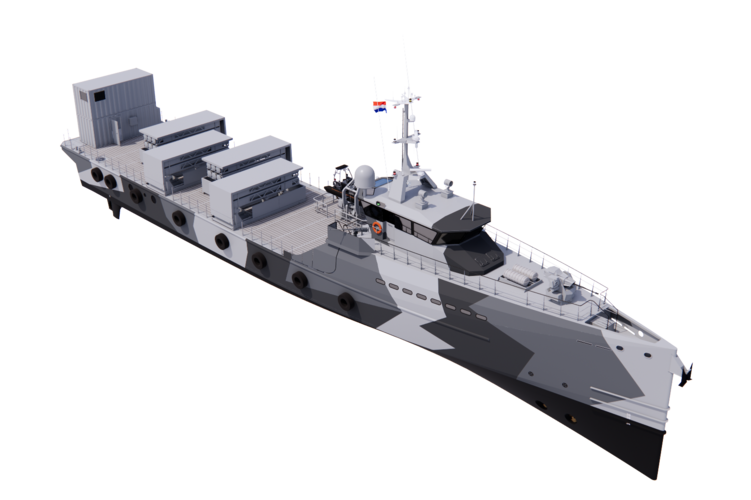The article refers to the
letter sent by the Dutch MOD (Word doc) to the government, which describes the proposal in more detail.
These are the requirements that drove the purchase of the two multifunctional support vessels:
1. improvement of the Navy's air defence capabilites in high-intensity conflict.
2. improvement of the Navy's firepower against ground targets, for Marines amphibious operations
3. improve the Navy's capability in protecting national assets in the North Sea.
In-service date is set for 2027.
For requirements 1 and 2, the RNLN also needs improved electronic warfare capability, new ECM systems will be purchased for two LC IAI is the supplier.
For requirement 1, more firepower is needed to deal with saturation attacks from ASMs and drones. The current magazine capacity of the LCFs is insufficient.
Also, the SM-2 Block 3A currently carried by the LCF as its main air defence waponis out of production, and its replacement (SM-2 Block IIICU) is not compatible with the LCF fire control system. Barak ER is going to replace the SM-2 once SM-2 stocks are depleted.
The APAR radar on the LCF will be used to guide the Barak ER. The Barak launchers will be containerized.
All 4 LCF will be modified to operate with the support vessels.
For requirement 2, the RNLN has to deal with opponents in coastal areas that use advanced sensors and long-range weapons. This changes how landings are done: the LPDs have to be farther out to sea.
The RNLN is looking at purchasing new Amphibious Transport ships optimized for this role.
To defeat the land-based threats, the support vessels will carry a long-range loitering missile (IAI Harop) that can be guided by troops on the ground. This will fill the gap between the 127mm guns on the LCF (which can fire projectiles to 100 km) and the Tomahawks.
This weapon will be containerized, so it can be deployed from the Amphibious Transport ships as well.
For requirement 3, Russia has been mapping and investigating NL assets in the North sea (oil rigs, wind parks and their infrastructure).
The support vessels will be equipped with 'underwater equipment' and sensors to track and monitor potential threats.
Satellite monitoring will also be used, an increase in monitoring capacity is also part of the project. Underwater drones will also be purchased.
The vessels are described as 'militarized', which to me indicates they're going to use modified commercial vessels:
later on the letter says 'military off the shelf', so they're buying a predesigned military vessel, not a commercial vessel.
Some related projects are mentioned at the end of the letter:
- integrating ESSM Block 2 on two of the LCF. The other two LCF will retain their Block 1 missiles.
- installing new ESM systems on four LCF.
- Precision guided rockets for the Marines and Air Mobile Brigade.
- the RNLN port at Den Helder has to be expanded to accommodate the new ships.



